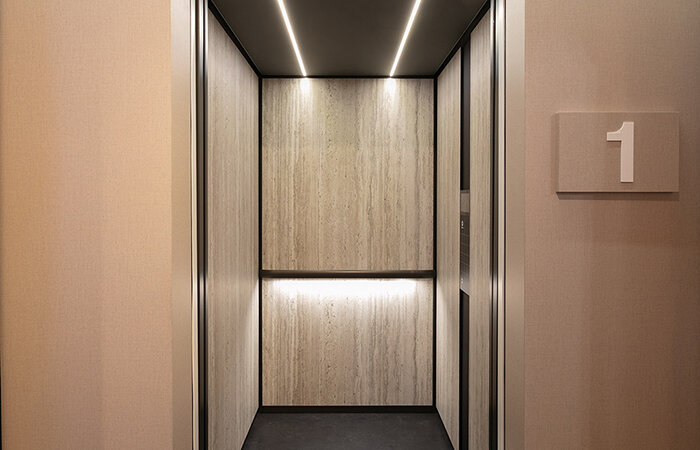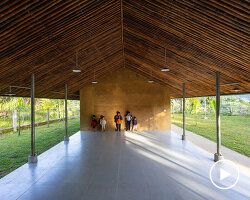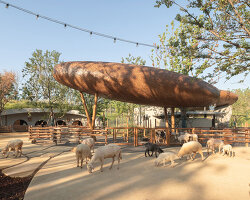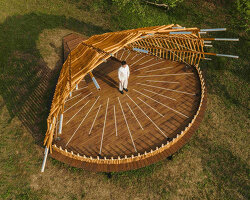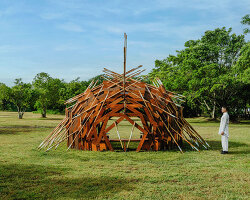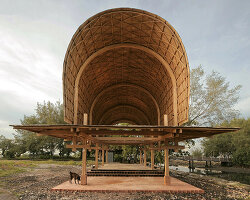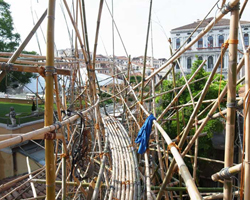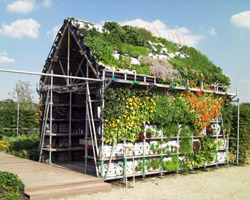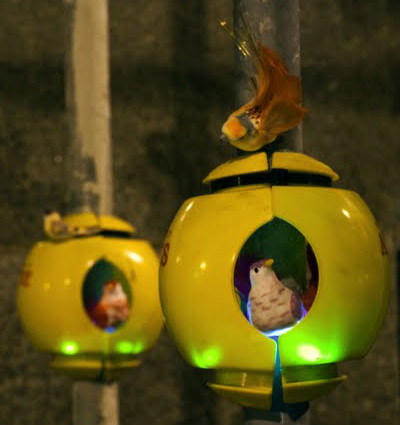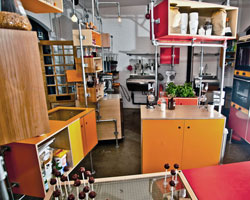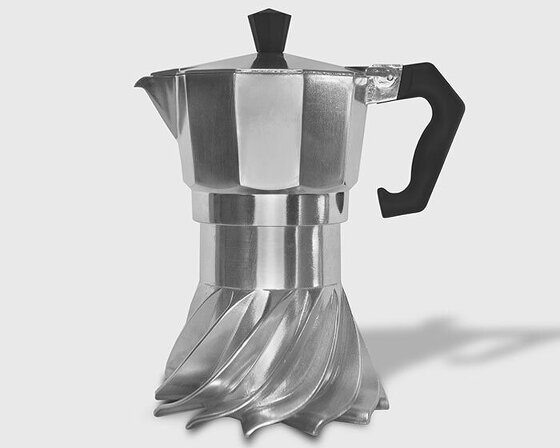KEEP UP WITH OUR DAILY AND WEEKLY NEWSLETTERS
happening now! swiss mobility specialist schindler introduces its 2025 innovation, the schindler X8 elevator, bringing the company’s revolutionary design directly to cities like milan and basel.
amid the rush of a hyper-accelerated world, the hue stands in for a blank canvas.
connections: 45
designboom radar rounds up a list of must-see exhibitions around the world to check out during the month of december.
connections: +160
running until july 26th, 2026, the show marks the first time wes anderson’s archives have been publicly displayed in the UK.
connections: +190
the spiral structure follows principles of fluid dynamics and thermodynamics to optimize heat distribution.
connections: 94
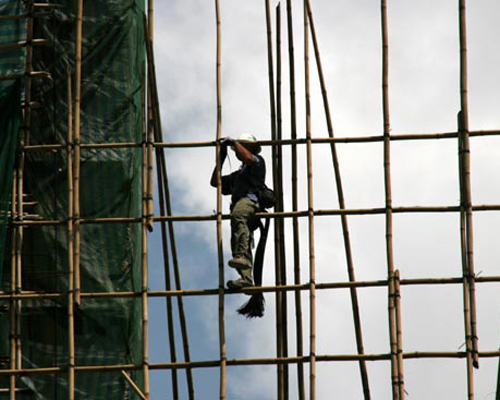
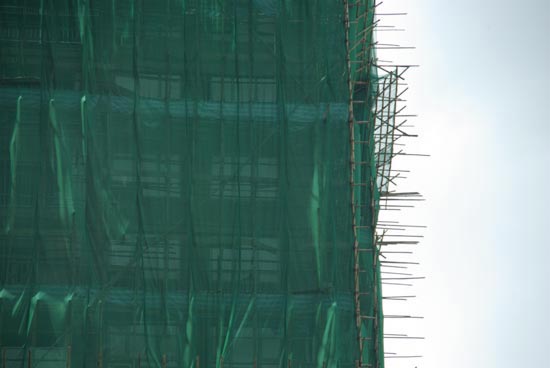 image © designboom
image © designboom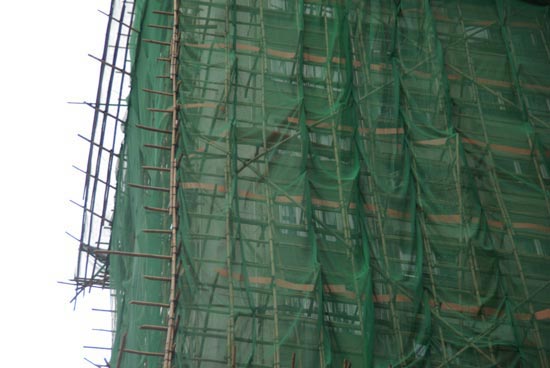 image © designboom
image © designboom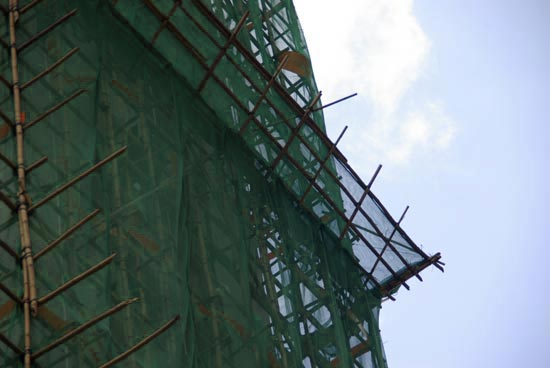 image © designboom
image © designboom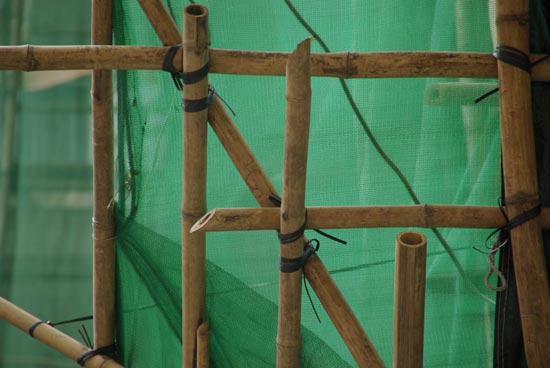 a look at the binding methods used to hold the bamboo components together image © designboom
a look at the binding methods used to hold the bamboo components together image © designboom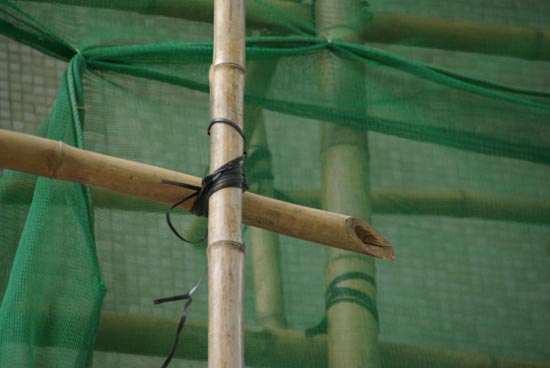 image © designboom
image © designboom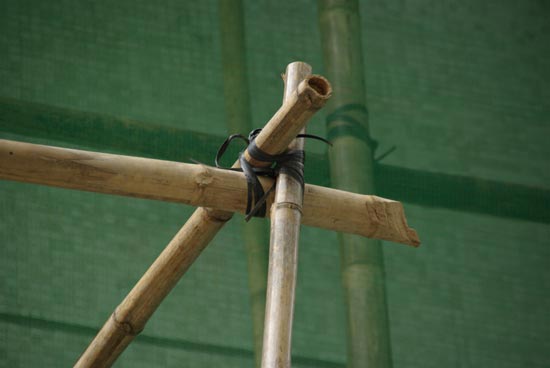 image © designboom
image © designboom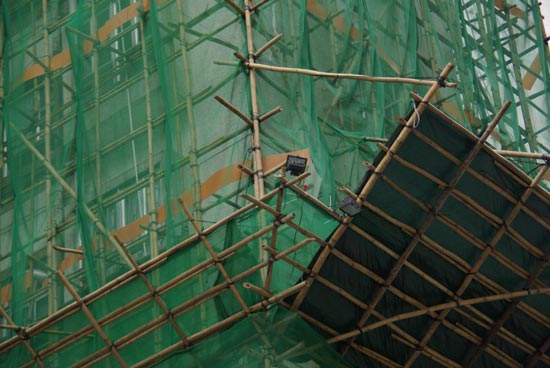 image © designboom
image © designboom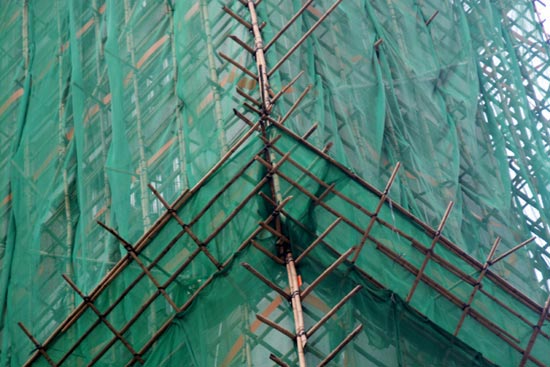 image © designboom
image © designboom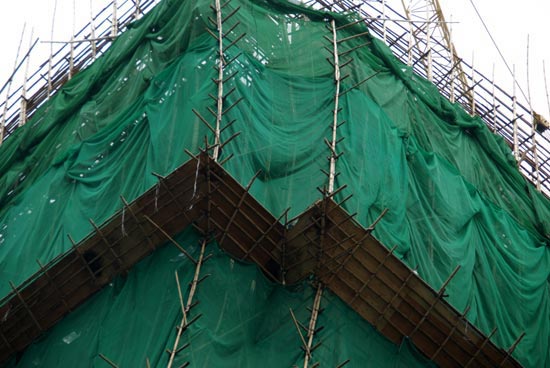 the bamboo is arranged to provide elevated stages for construction workers image © designboom
the bamboo is arranged to provide elevated stages for construction workers image © designboom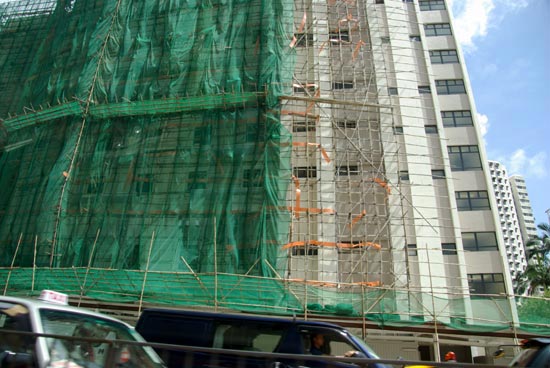 image © designboom
image © designboom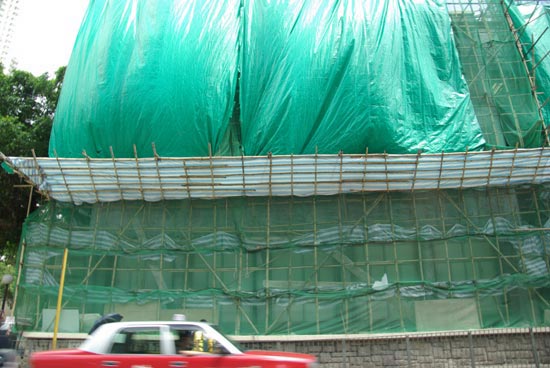 netting and nylon sheeting are used to stop debris from falling on people below image © designboom
netting and nylon sheeting are used to stop debris from falling on people below image © designboom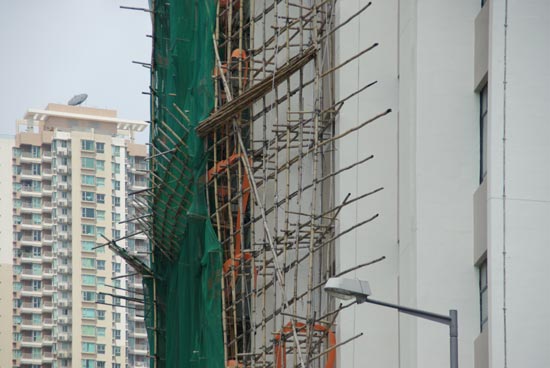 image © designboom
image © designboom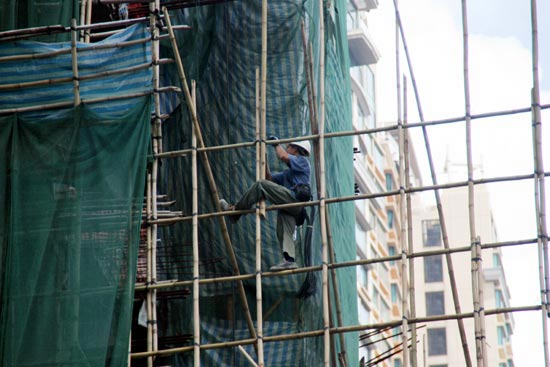 a worker climbing a grid-like assembly of bamboo image © designboom
a worker climbing a grid-like assembly of bamboo image © designboom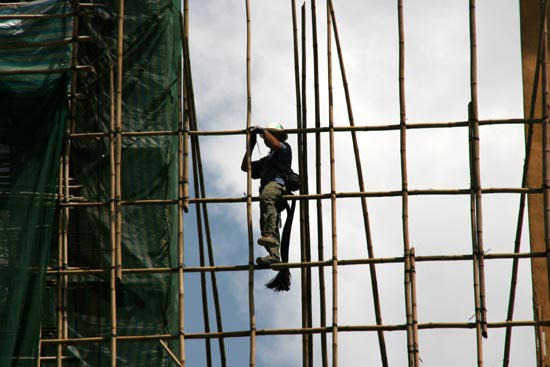 working freely image © designboom
working freely image © designboom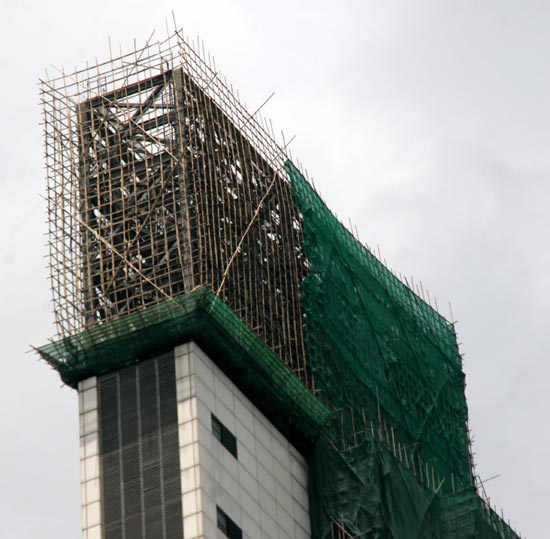 image © designboom
image © designboom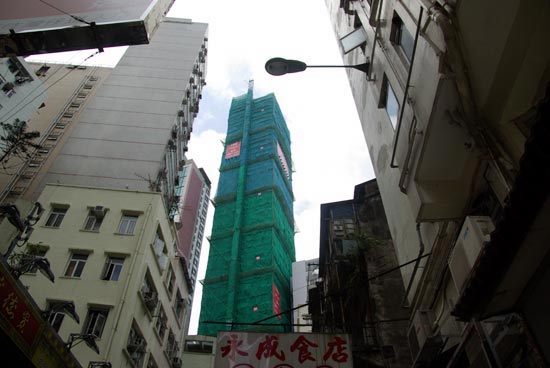 a building clad in green netting and bamboo scaffolding stands amongst the hong kong skyline image © designboom
a building clad in green netting and bamboo scaffolding stands amongst the hong kong skyline image © designboom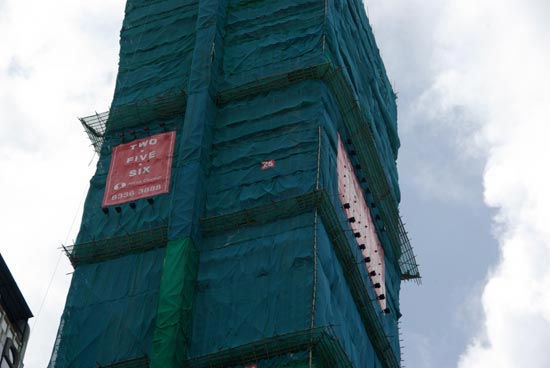 working platforms run around the circumference of a building image © designboom
working platforms run around the circumference of a building image © designboom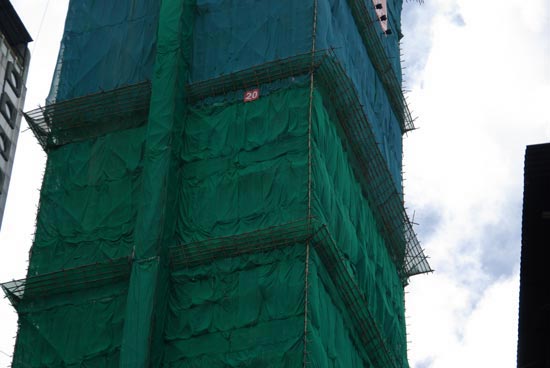 image © designboom
image © designboom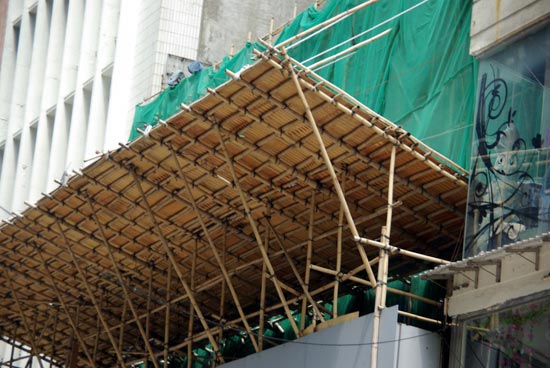 a platform extends from a building image © designboom
a platform extends from a building image © designboom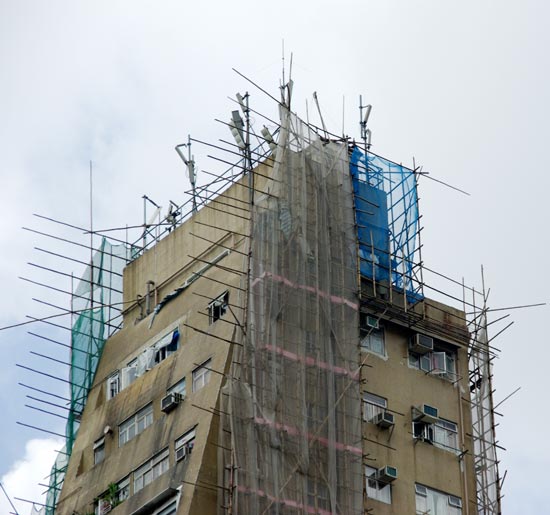 image © designboom
image © designboom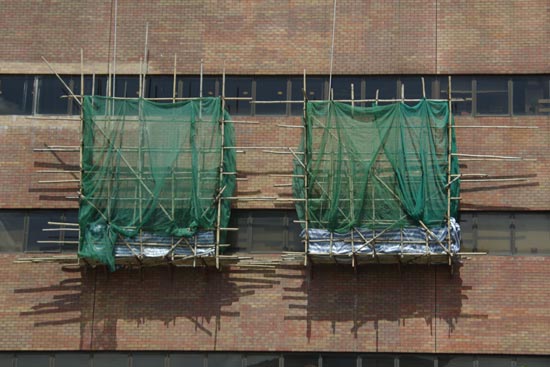 an example of truss-out scaffolding which is used for small repairs image © designboom
an example of truss-out scaffolding which is used for small repairs image © designboom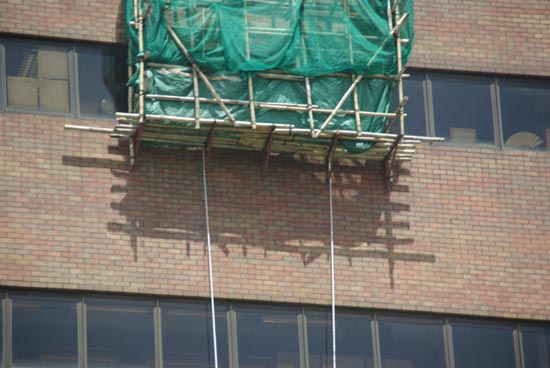 truss-out scaffolding uses the side of the building for structural support image © designboom
truss-out scaffolding uses the side of the building for structural support image © designboom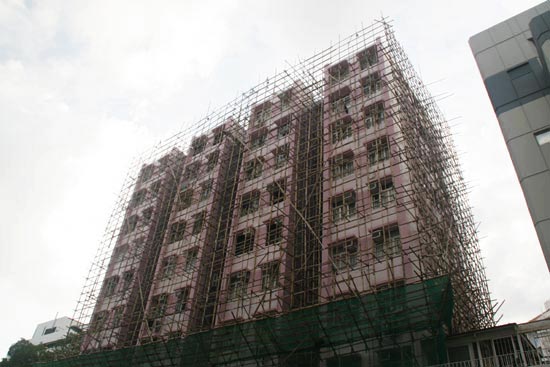 bamboo framework image © designboom
bamboo framework image © designboom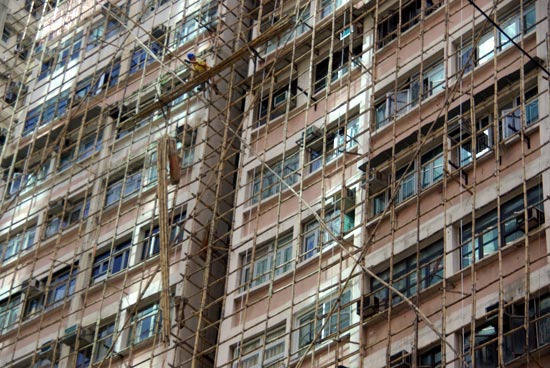 the complex framework image © designboom
the complex framework image © designboom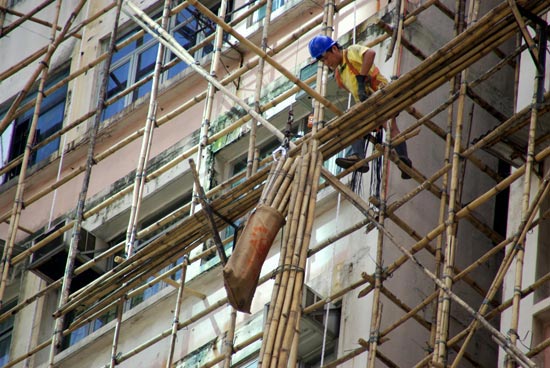 bamboo being passed up to workers via harness and sack image © designboom
bamboo being passed up to workers via harness and sack image © designboom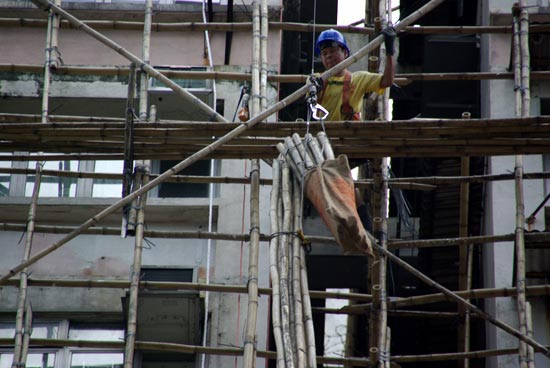 different lengths of bamboo being delivered image © designboom
different lengths of bamboo being delivered image © designboom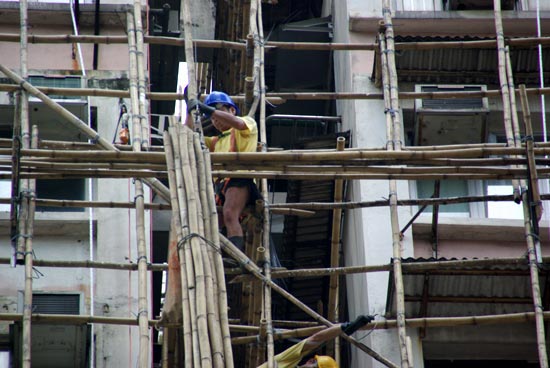 image © designboom
image © designboom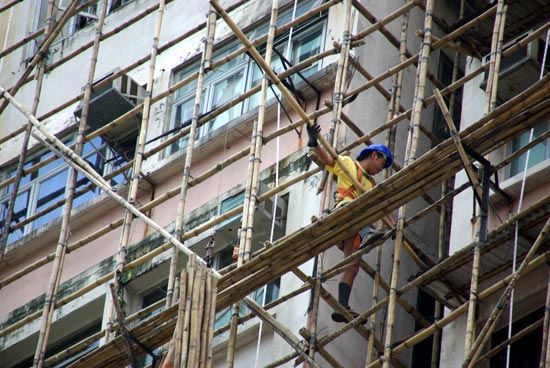 assembly continues on the double-layer scaffolding image © designboom
assembly continues on the double-layer scaffolding image © designboom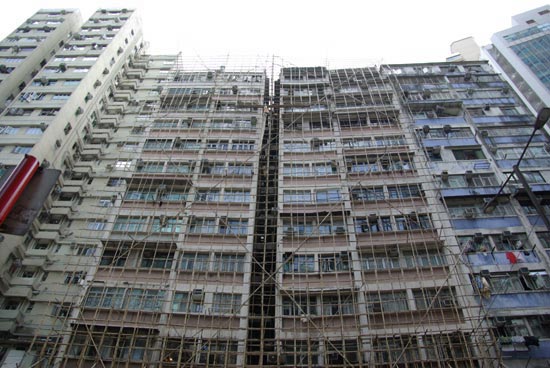 image © designboom
image © designboom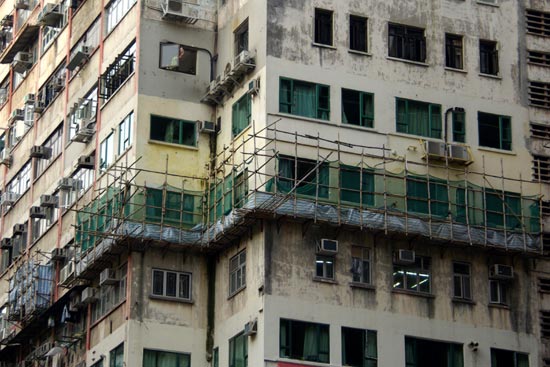 a portion of an apartment is decorated in truss-out scaffolding image © designboom
a portion of an apartment is decorated in truss-out scaffolding image © designboom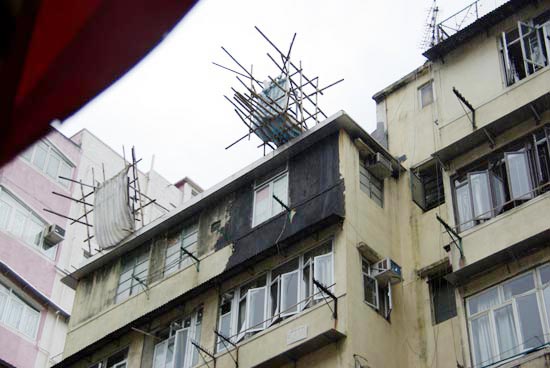 image © designboom
image © designboom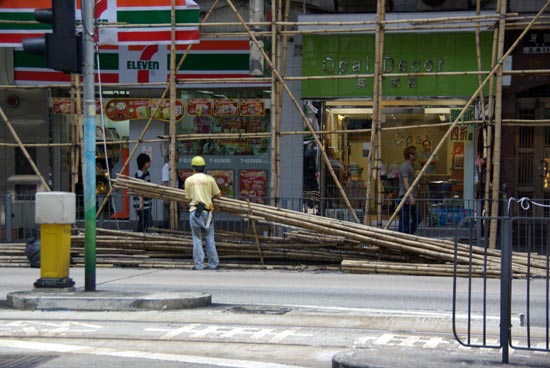 image © designboom
image © designboom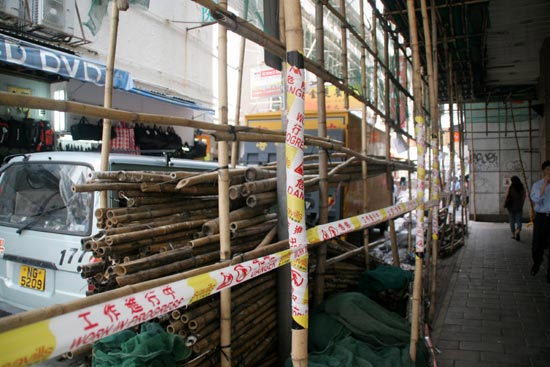 bundles of bamboo waiting to be used image © designboom
bundles of bamboo waiting to be used image © designboom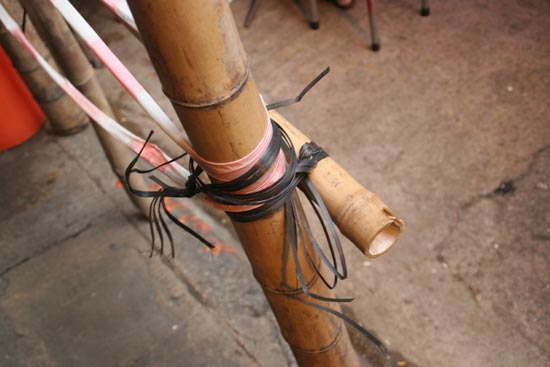 image © designboom
image © designboom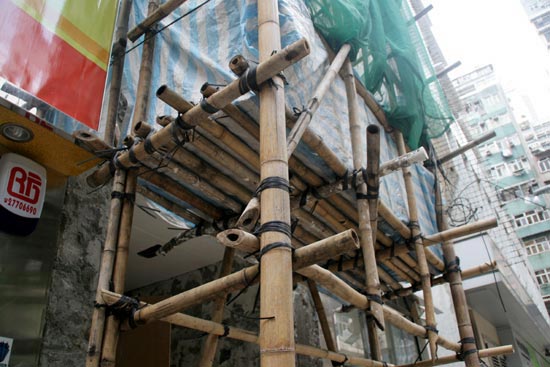 they are built in such a way to minimize obstruction to sidewalks and streets below image © designboom
they are built in such a way to minimize obstruction to sidewalks and streets below image © designboom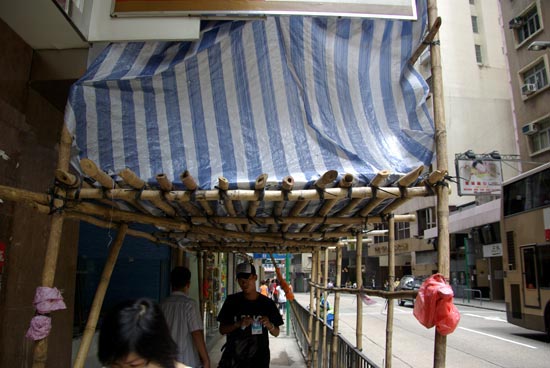 creating a canopy over the sidewalk image © designboom
creating a canopy over the sidewalk image © designboom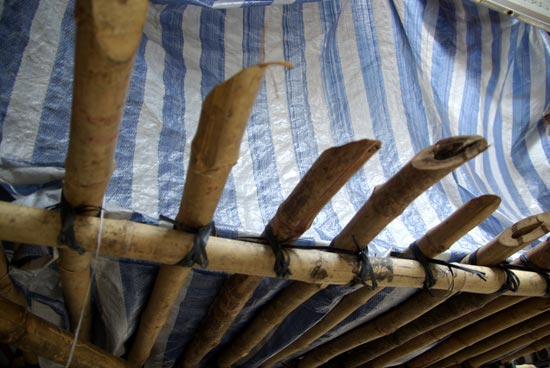 image © designboom
image © designboom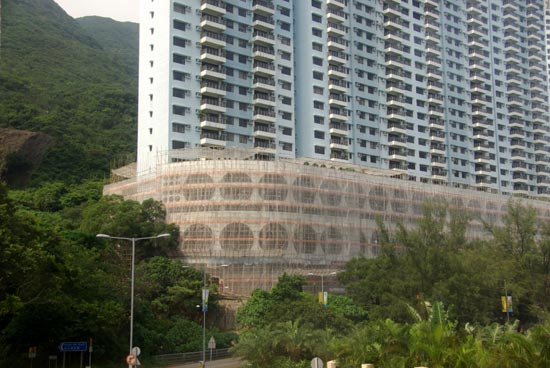 bamboo scaffolding can be adapted to different shaped buildings like this curved façade image © designboom
bamboo scaffolding can be adapted to different shaped buildings like this curved façade image © designboom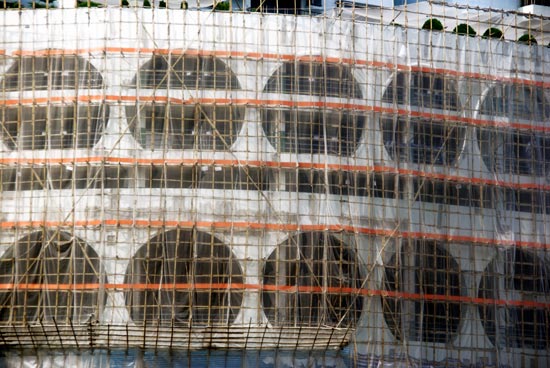 image © designboom
image © designboom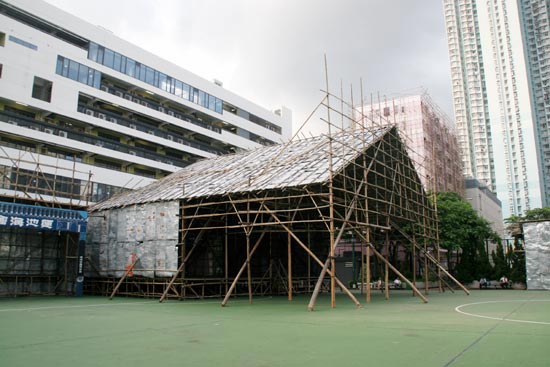 the versatile material is also used as a structural frame for houses and buildings image © designboom
the versatile material is also used as a structural frame for houses and buildings image © designboom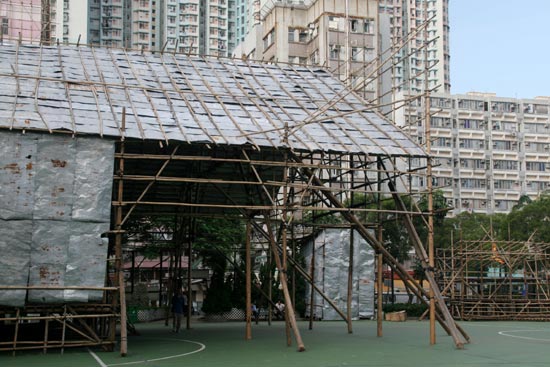 image © designboom
image © designboom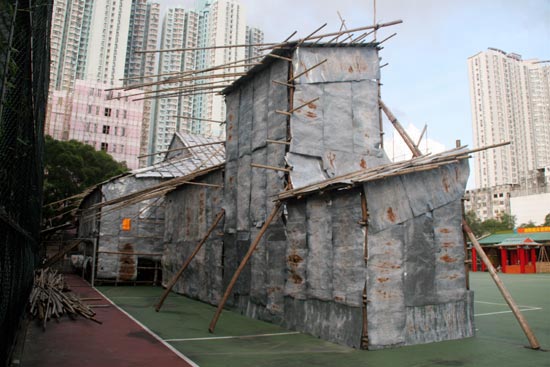 image © designboom
image © designboom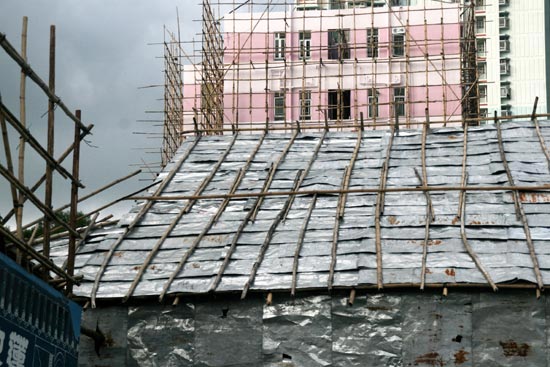 bamboo lined-up on a roof image © designboom
bamboo lined-up on a roof image © designboom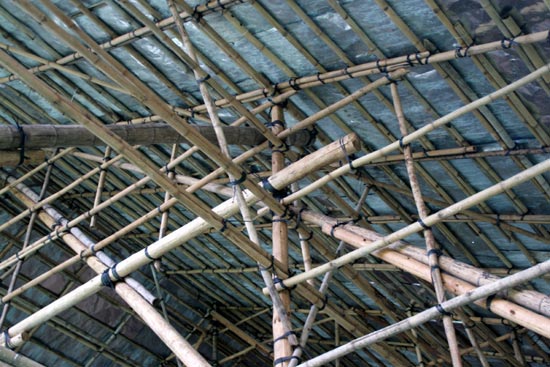 intricacy of the binding techinques image © designboom
intricacy of the binding techinques image © designboom